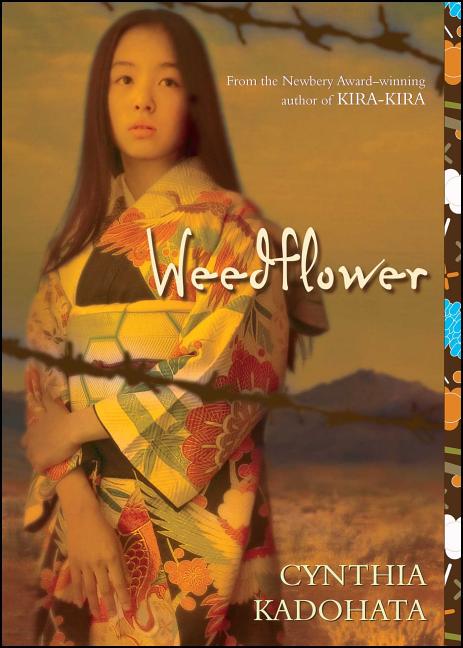Book Description
for Weedflower by Cynthia Kadohata
From Cooperative Children's Book Center (CCBC)
Sumiko is the only Japanese student in her sixth grade class, and she often feels lonely and isolated at school. At home, she takes comfort from both the predictability of family routines and unexpected beauty as she works on her aunt and uncle’s flower farm. After the bombing of Pearl Harbor, however, beauty and predictability seem like impossibilities. Sumiko and her family are interred along with thousands of others of Japanese descent living on the west coast. At Poston, the camp in the midst of the barren Arizona dessert where her family ends up, Sumiko reluctantly starts a small garden. As she nurtures the flowers, grown from seeds she brought from home, she also nurtures an unexpected friendship with Frank, a Mohave boy living on the nearby reservation who often visits the outlying areas of the camp. She learns that Frank and his family dream of farming the land around Poston some day. She also learns that Native peoples, like the Japanese in America, have a long and painful history with the government. When she learns that the Japanese and Japanese Americans who have been locked up at the camp are now being required to swear allegiance to the government, Sumiko is both angry and confused. “If all it took to prove your loyalty was some form, why hadn’t the government given them the form before putting them in the camps?” Like many, Sumiko is also frightened at the thought of leaving when the opportunity finally arrives—at least the camp keeps them safe from people who would do them harm for being Japanese. Cynthia Kadohata’s richly detailed novel is punctuated with small, explosive moments of revelation as a Japanese American girl during World War II is challenged by racism and questions about identity, friendship, and what it means to be free. (Ages 10–14)
CCBC Choices 2007 . © Cooperative Children's Book Center, Univ. of Wisconsin - Madison, 2007. Used with permission.


